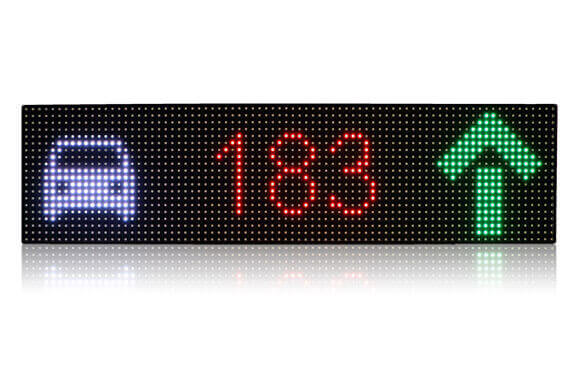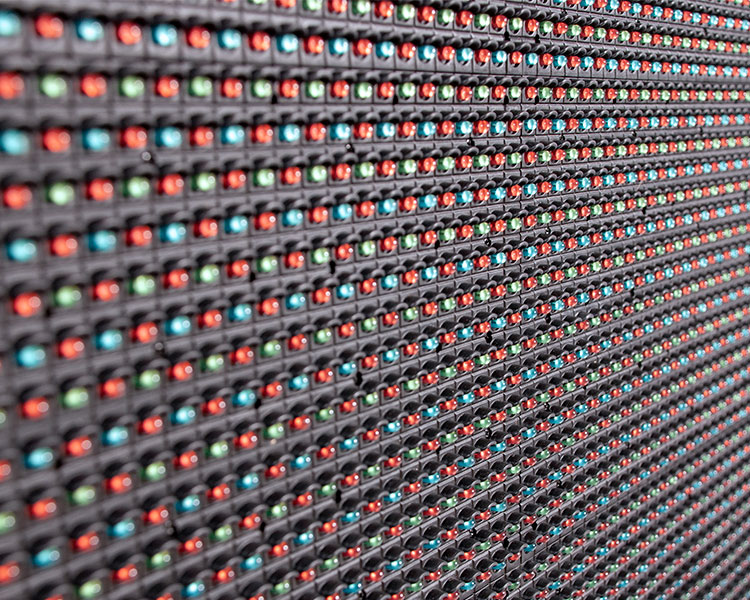Free News For Deciding On Outdoor Fixed Led Display
Free News For Deciding On Outdoor Fixed Led Display
Blog Article
What Is The Importance Of The Resolution And Pixel Pitch When Looking Into Led Displays?
When looking into LED displays, resolution and pixel pitch are crucial factors to take into consideration. These two factors directly affect the clarity and detail of the display as well as the overall visual experience. These two aspects are essential for a variety of reasons.
1. Image Quality
Pixel Pitch - The pixel pitch is the distance between the LED's center and its neighboring pixel. Smaller pixel pitches mean that LEDs are less spaced, which results in greater resolution and higher density of pixel. This translates directly to crisper images that are more detailed, which is especially important in the case of content that contains intricate details or text.
Resolution: Resolution is the total amount of pixels displayed on the screen usually expressed in width x height (e.g. 1920x1080). Higher resolution allows the display to be more detailed and creates a more immersive experience. This is particularly true when large screens are used and viewers are close to the display.
2. Viewing Distance
The ideal viewing distance is tightly tied to pixel pitch. Displays that are seen from a distance like those found in retail or exhibitions and indoor screens, a smaller resolution is needed to prevent the occurrence of pixelation. However, outdoor large-scale display screens and billboards that are seen from the distance can benefit from a smaller pixel pitch because each pixel will be less visible.
3. Content Versatility
Displays that have a smaller pixels pitch and a greater resolution are able to handle a greater range of content types, from high-definition videos to intricate graphics and tiny text. This versatility is crucial for applications that need fluid content, like broadcast studios, digital signage, or control rooms.
4. Cost Implications
Although a smaller pixel pitch offers superior image quality, it also significantly increases the price of the display. Because of the larger quantity of LEDs required screens with a larger resolution will cost more to produce. In order to find the best balance between budget and high resolution, you should consider your needs as well as the distance to the screen.
5. Application Specificity
The importance of the resolution or pixel pitch can differ based on the use case.
Indoor Displays are typically smaller pixels are required (e.g. between 1.2mm between 1.2mm and 2.5mm) for indoor displays to ensure high resolution for close-up viewing.
Outdoor displays may have higher pixels pitches (e.g. between 4mm to 10mm) in order to be seen more distantly which makes high resolution less crucial.
6. The durability and upgradability
Pixel pitch is shrinking as display technology advances. This permits higher resolutions and smaller spaces. If you invest today in a screen that has optimal pixel pitches, it will be more efficient and useful for a longer period of time. This reduces the need to update often.
Conclusion:
Pixel pitch and display resolution are important factors that determine the performance of an LCD display. This is especially true with regard to the viewing experience and content versatility. To ensure that you choose a display which meets your needs, take into consideration the following aspects when looking into LED screen options. View the most popular creative led displays for site examples including tv the wall, outdoor display led, led screen display rental, led display, transparent led screen, wall tv led, led wall tv, led wall, outdoor digital screens, church video wall and more.
What Is The Significance Of Portability And Weight In Led Display Research?
The size and weight of LEDs are crucial factors when choosing a display, especially for certain types of applications. What are the significance of these variables:
1. Installation and Setup is simple.
Weight: A smaller LED display is simpler to move around when it is installed, especially if the display is mounted in an environment where it will need to be mounted on walls, roofs or some other structure. Large displays require stronger support systems, which may complicate the installation process and increase costs.
Portability: Portable displays are made to be easy to set up and removal, which makes them ideal for trade shows, parties as well as temporary installations. They're lightweight and easily transportable and reduce the amount of time needed to put up each display.
2. Staging and renting:
Frequent movement: In rental and staging markets where displays are often relocated from one location to another, lightweight and portable LED panels are crucial. These panels allow for quicker time between events, less transport costs, aswell with a lower risk of damage in handling.
Modularity - Portable LED displays tend to be modular in their style, making them easy to put together and take down. The versatility of the display is crucial to creating custom configurations to satisfy the requirements of an event.
3. Structure Requirements
Support Structures. Heavy LED displays will require more complicated and robust mount structures. This can increase the price and complexity. Lighter displays, on the contrary, can be supported with simpler and less expensive structures. They're therefore better suited to various environments.
Venue constraints: Certain venues may have weight limit restrictions specifically for ceiling mountings on walls and ceilings. A light-weight display can allow the installation to be accommodated within these limitations.
4. Transport and Logistics
Shipping Costs: LED display weight directly impacts the cost of shipping and handling. Shipping costs are less expensive for lighter displays, especially when they are used for large-scale installations and international transportation.
Storage and handling: Lightweight and portable displays are easier to store and handle with less space, and simpler logistics, which is essential for businesses who often transport displays to different locations.
5. Flexible Use
Reconfigurability: Lightweight and portable displays are often modular, allowing them to be rearranged into different sizes and shapes to meet the needs of various applications. It is especially helpful for creative installations in which it is important to be flexible in design.
The Displays are versatile They can be used anywhere, whether it is the smallest pop-up event or a large outdoor concert. Their versatility surpasses those of larger, bulkier displays.
6. Safety Factors
Risk reduction: Lighter displays are less likely to cause injuries when they are being installed or handled. This reduces the chance of causing damage. This is crucial, particularly in situations where the display is regularly moved or adjusted.
Compliance Regulations on safety, particularly in public spaces, could restrict the weight of installations. For compliance, it's important to ensure that your display is in compliance with the regulations.
7. Energy Efficiency
Although they are not directly tied to the weight of the display, displays that are lightweight tend to be designed for energy efficiency. Portable LED screens may use less energy. This could be an advantage in environments that are power-hungry or in situations where reducing operational costs is important.
Conclusion:
LED displays must be lightweight and portable. This is crucial particularly for situations that require them to be frequently moved around, in temporary locations or in areas that have weak structural support. These aspects affect not just the accessibility of installation and transportation but as well the flexibility, security as well as the overall cost of the display. It's crucial to focus on lightweight and portability when you are researching LED displays when your project includes frequent movement, fast setup, or compliance to certain structural or safety standards. View the most popular quality rental led display for website advice including led board rental, tv led wall, outdoor digital screens, transparent display monitor, transparent screen monitor, outdoor display led, led board, led display, led screen rental, digital display and more.
What Is The Significance Of Color Accuracy And Calibration In Led Display Research?
When looking into LED displays, it is important to consider the accuracy of color and calibration, particularly for applications that require aesthetic quality and consistency of the brand. Why are these factors important?
1. Realism, Visual Quality and authenticity
Color Accuracy: How precisely can LED displays reproduce the colors created by content creators? High-quality color accuracy assures that images and videos look vibrant, real and vivid. Also, they appear without distortions.
Important: In cases such as advertising and broadcasting as well as professional and retail presentations, precise colour reproduction is vital for maintaining the appeal of visuals and conveying the message.
2. Brand Integrity
Consistency of Branding The accuracy of colors is crucial for companies that depend on certain color schemes to convey their brand. Any deviation from the correct colors could misrepresent the brand and may damage its reputation.
Application: Brand colors should be kept in good order throughout retail displays and corporate environments.
3. Engagement and Impact of Audience
An enhanced experience for viewers High-quality displays with superior color accuracy will provide a more immersive experience to the audience. Accurate colors help convey messages and emotions more effectively, enhancing the overall effect of the screen.
Application: In places like theaters, museums, or anywhere that the goal is to trigger emotional reactions Color accuracy is a must to ensure that your audience receives the ideal experience.
4. Content Creator Intent
Artists, designers, content creators, and others often put in an enormous amount of effort to create visuals that use particular colors. A display that accurately reproduces these colors will ensure that the work of designers, artists and content creators is shown exactly as they intended.
Application: Maintaining color accuracy in areas like digital art, photography and film is vital for the artist's vision.
5. Calibration to Ensure Consistency
Uniformity Across the Panels. The calibration process ensures all LED panels are calibrated to provide consistent colours and brightness. This prevents any apparent gaps or mismatches. This is crucial, particularly for large-scale displays with multiple panels.
Regular Maintenance: Even the best displays will lose the accuracy of their colors in time. It is important to calibrate your display on a regular basis to ensure it continues to meet standards and maintain a steady performance.
Applications for video walls or large outdoor screens and multi-panel layouts the need for calibration is essential to ensure an even and consistent appearance. This is crucial for professional installations.
6. Effect on the types of content
Different content needs various types of content require different requirements for precision in color. For example medical imaging displays need extremely high accuracy to ensure proper diagnostics, while advertisements may place a greater emphasis on vividness and saturation.
Application in highly specialized fields, such as in design, medical imaging, or luxury retailers, the ability to precisely calibrate colors ensures the display will meet the specifications of the content being shown.
7. Technology and Specifications
Bit Depth (and Gamut) Displays that have high bit depths as well as displays with wide color spectrums (like DCI P3 or rec. 2020 can produce a greater range of colors and offer better color accuracy. Knowing these specifications is crucial when selecting a display to use in applications where accuracy of color is a priority.
Advanced Calibration Tool New LED displays typically come with the latest software and calibration tools that allow precise adjustments. This means that the display is accurate for its lifespan.
A decision to invest in displays with excellent color accuracy is vital for businesses such as high-end graphic design and advertising.
Conclusion:
Accuracy in color and calibrating LED displays is vital to ensure they produce high-quality visuals, which conform to the brand's standards. If the display will be used for entertainment, advertising or professional presentations, as in specialized fields like medical imaging, then precise color reproduction can help achieve the desired impact while preserving visual integrity. It is important to ensure that color accuracy is maintained and making sure that LED displays are calibrated when looking into them, especially if you need precise colour representation or a consistent visual performance. See the top lightweight led screen for site info including led board rental, outdoor digital display, led wall panels, led display screen, led screen transparent, led display device, video walls, led video wall panels, led screen panels, advertising tvs and more. 